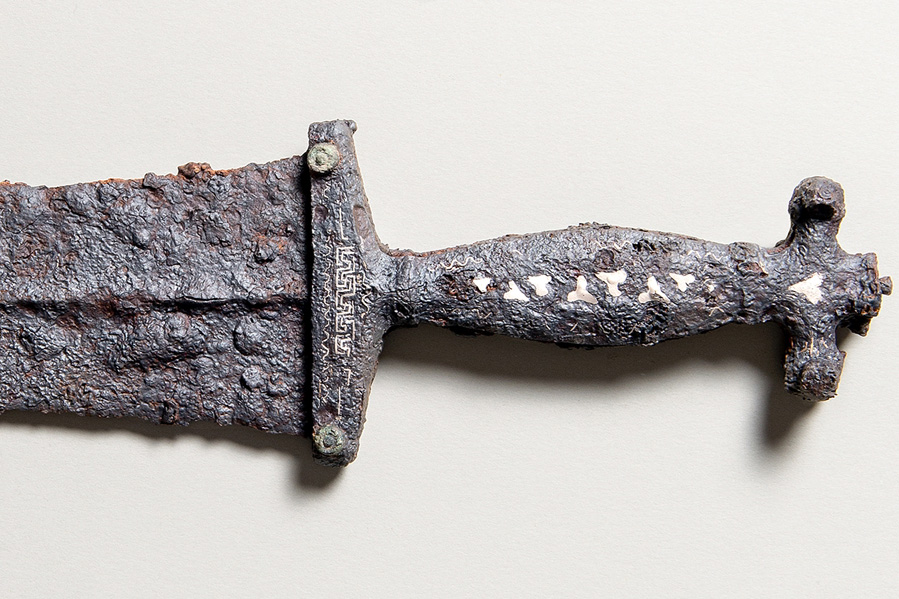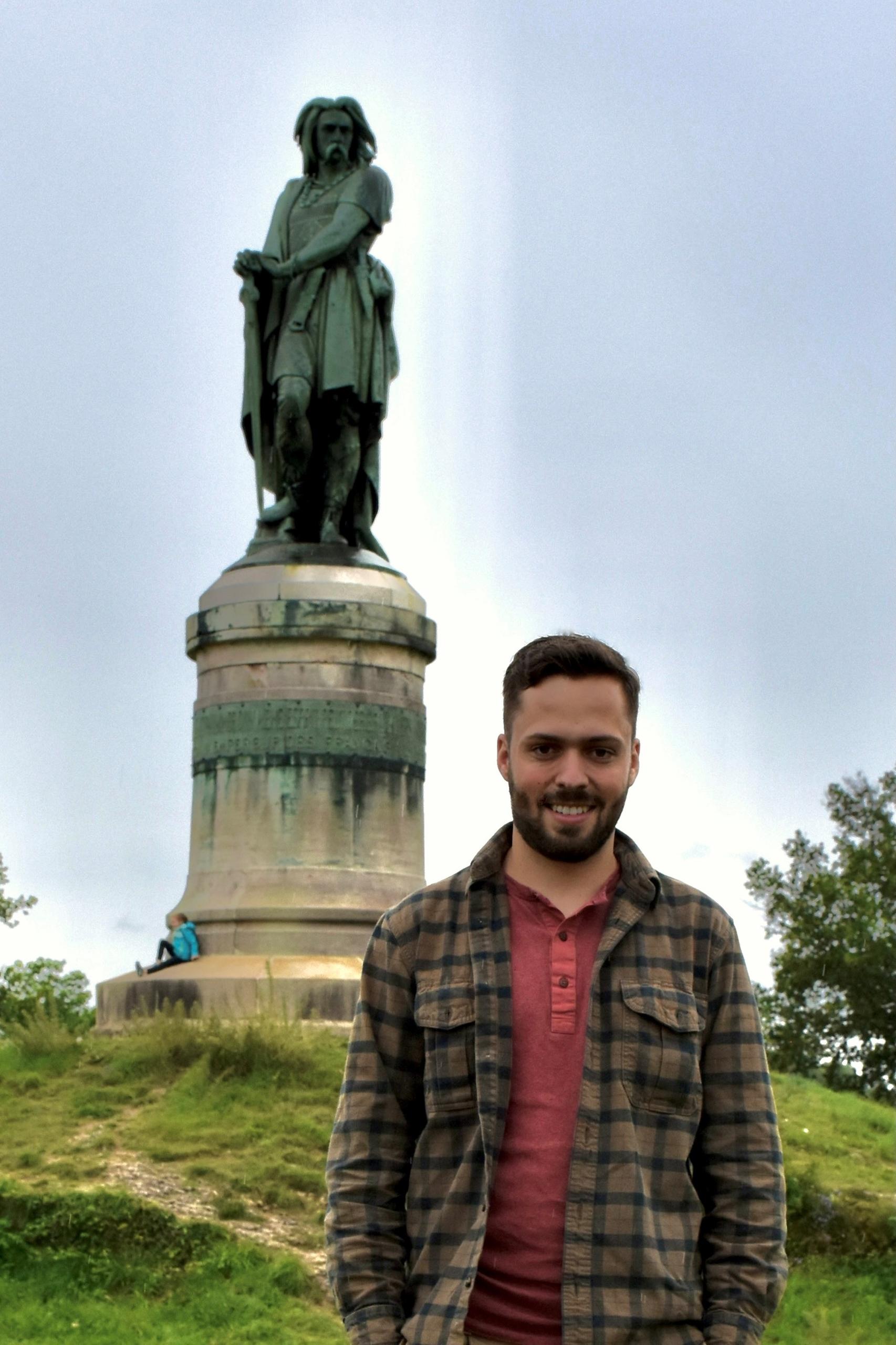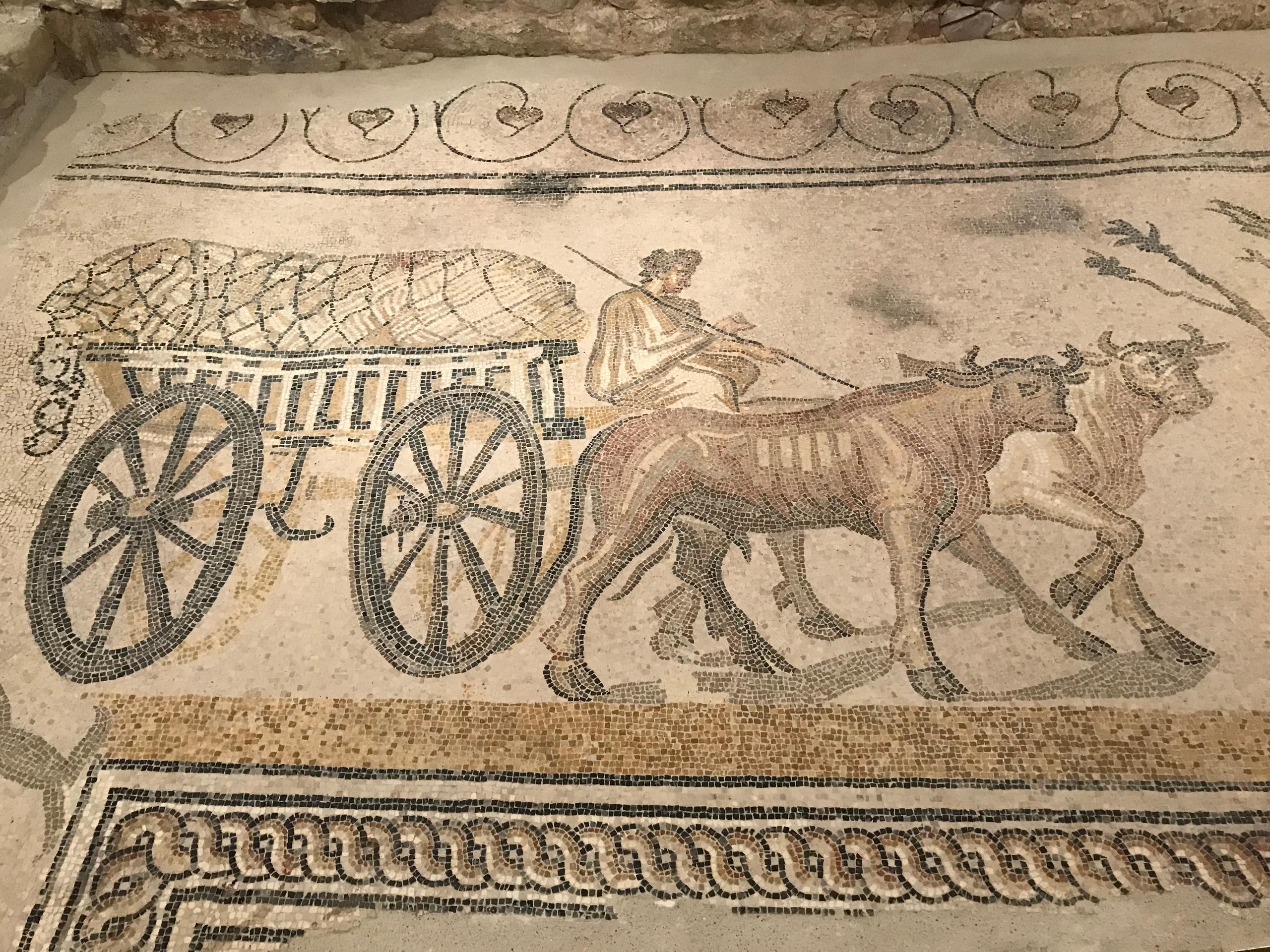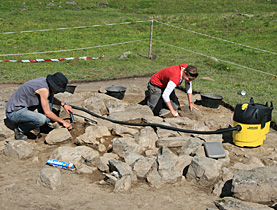How a hobby archaeologist uncovered a Roman battle site

Hundreds of artifacts littering a Roman battle site in Switzerland have been uncovered thanks to the persistence of an amateur archaeologist.
The finds – including a dagger, well-preserved slingshot stones, coins, nails and part of a shield – are assumed to have been left on the battlefield after a clash between Romans and a local tribe at around 15BC.
Lucas Schmid, who volunteers for the local archaeological association, uncovered the remains using a metal detector at a remote southeast corner of Switzerland, near the Crap-Ses gorge between the towns of Tiefencastel and Cunter.
Other artifacts had previously been unearthed at the location, but the site was considered to have been picked clean by previous sweeps.

Schmid proved this was not the case after discovering a 2,000-year-old Roman dagger. “The signal from the metal detector was very inconspicuous and quiet. At first there was nothing to suggest such a large find,” Schmid told SWI swissinfo.ch. “As I dug deeper, the tension rose – I knew it had to be an old object. When I exposed one end of the object, I saw that it was a dagger. When I saw it was a complete dagger, I was overjoyed.”
“It’s fair to say that this is certainly my most spectacular find to date. But smaller finds – coins or fibulae [brooches] – can also be very important as these are easy to date.”
The discovery of the dagger alerted an archaeology team from the University of Basel who found several hundred other objects during a search of the 35,000 square metre site in September. These artifacts have now been made public.
How the battle unfolded
It is assumed that a battle took place between Roman forces and a local Rhaetian tribe near to Cunter in what is now canton Graubünden.
“This is the first time that remnants from a Roman battle site have been found in Switzerland,” Peter Schwarz, professor of Provincial Roman Archaeology at the University of Basel, told SWI swissinfo.ch. “It seems that the Romans attacked their enemy on one side of the valley and then drove them over a river to the other side, before attacking again.”
Schwarz believes that as many as 1,500 soldiers took part in the battle, making it a fairly minor skirmish compared with other Roman battlegrounds in Europe.
The coins and type of shoe nails found offer firm evidence of the time period of the battle. But the team is hoping to narrow down the date even further and hypothesises that it could be linked to a known decree from Roman Emperor Augustus to bring the area under Roman control in 15BC.
Hobby archaeologist
“For as long as I can remember I’ve been interested in archaeology and history in general. Even as a child I loved visiting castles and exploring them,” said Schmid, who has recently qualified as a dentist.
The 26-year-old has no plans for a career change into archaeology but intends to continue pursuing his hobby out in the field with metal detector.
“A large part of my activities consists of planning with aerial photos, geospatial models and historical documentation relating to sites. This is very important, because even a good find loses its scientific impact without appropriate documentation to back it up.”
Dig to continue next year
Excavations will continue in the region next year, organised by the University of Basel along with the cantonal and federal authorities. So far no grave sites have been discovered and it is not known how many people died in the battle.
Rhaetian tribes occupied the eastern Alps at the time of the battle, including parts of modern-day Austria and Italy. The Romans conquered the region and named the area Rhaetia under Augustus.
The Swiss portion of Rhaetia eventually became the modern-day canton Graubünden.
Archaeological evidence of the Roman occupation of Switzerland is regularly unearthed. One of the most spectacular finds was a collection of mosaics in the western town of Orbe.

In compliance with the JTI standards
More: SWI swissinfo.ch certified by the Journalism Trust Initiative















Join the conversation!